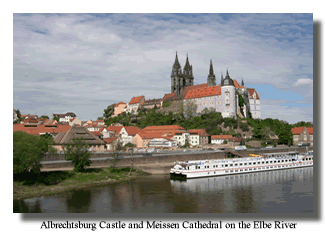
The rivers and canals of Europe are open for travel. As many as 20,000 total miles of inland waterways let travelers absorb European culture at a relaxed, leisurely and up-close pace. The waterways of Austria, The Czech Republic, England, France, Germany, Hungary, Ireland, Italy, The Netherlands, Portugal, Russia and others now have many options to meet the growing demand for river cruising.
No longer an obscure way to see old Europe, travel by river is one of the best ways to venture out and take in the heart of the continent. This guide looks at the options available to travelers wishing to take a trip through Europe from a river’s perspective, easing through the countryside at a pace that permits all of the culture’s best possibilities to unfold. Travelers who return from river cruises carry memories of very intimate encounters with the countryside, local people, and fellow passengers. River cruise and barging travelers inevitably become true enthusiasts for the experience.
A traveler can journey Europe’s waterways in a variety of ways. River cruising most often refers to river going cruise ships typically carrying fewer than 250 passengers. As such, river cruising ships are much smaller than mass-market, ocean-going vessels, but as river boats go, are on the larger end of the scale. Western and Central Europe have many river routes to offer the larger cruise boats. Popular itineraries include the Danube visiting Hungary, Austria and Germany and the Elbe River through Germany and the Czech Republic. In France, the Rhone and the Soane meander through Provence and Burgundy, while the Seine takes passengers through Paris and Giverny. In Northern Italy, the Po offers exciting opportunities with a variety of river cruise companies. Finally, the Volga, connecting St. Petersburg and Moscow provides a decidedly different way to port between these two magnificent cities. River cruises tend to be affairs of luxury, with an emphasis on informal, but upscale travel. Relaxation and intensive sightseeing are the main activities, as organized entertainment is somewhat limited on most river cruises, except for the occasional lecture or sing-along. Mostly, the crew allows passengers to enjoy their time as they see fit.
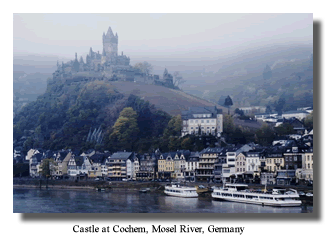
Cabins on larger river vessels vary in size from 90 square feet on older ships to over 200 square feet on newer. Most rooms are outside cabins, meaning they have windows for optimal sightseeing. The least expensive cabins are lower in the boat, while passengers pay more for higher rooms with better views. Cabins come with basic amenities, such as hair dryers and televisions, and are often very nicely furnished. The larger river cruise vessels have telephones and even Internet service.
Many first time river cruisers are delighted to discover that, unlike ocean cruising, there is very little boat motion. The mandated slow speeds and flat waters of the rivers ensure a quiet, placid voyage. It is often difficult when not on deck to even know the vessel is underway!
On longer trips, 10 days or more, the typical river cruise passenger is a well-traveled individual often over the age of 60. Shorter cruises typically attract a younger crowd. River cruises on the larger vessels do not always allow children under 12 as passengers, so make sure to check on any restrictions for families. The passenger manifest will be a mix of European and North American travelers, but most crews speak at least some English, and many are fluent. Individuals who require physical assistance when traveling should check with their travel consultant to determine the accessibility of any particular vessel for disabled passengers.
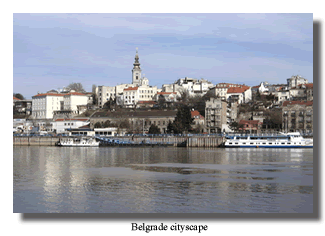
Meals have always been a special part of cruising, and river cruises have maintained that tradition. On river cruise vessels, food is a key part of the experience, prepared by a dedicated chef, the ship’s captain, or a restaurateur in a small village. Europeans take great pride in their culinary skills, and practically everyone who has ever cruised along the rivers and canals of Europe has at least one story about an unforgettable meal or food experience. Special dietary considerations can often be accommodated if requested early in the booking process. On self-drive barges, travelers can stock up on provisions from the villages and cook on board, or splurge at dining opportunities along the way.
Crewed barges with meal service and more amenities are sometimes referred to as “Hotel Barges”: smaller vessels with a passenger capacity of as few as six to as many as 50. Hotel barges tend to be much slower than river cruisers, and due to their smaller size, can enter more narrow waterways like canals, in addition to the larger rivers. Hotel barges range from Spartan accommodations to luxurious rooms with gourmet meals, fine wines, and bicycles for self-guided shore excursions. Cabins vary in size and most often have private baths with showers. Many barges have saunas and hot tubs on deck. Most are without telephones or Internet service, though, as such modernity is typically absent in the barge market.
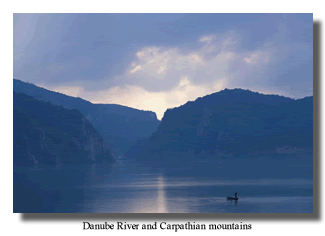
Travelers can also book a “self-drive” barge and be their own crew. The smallest of the vessels, the “narrow boats” are often seen on the small canals of the United Kingdom and Ireland as well as Holland. These boats are very easy to handle and seldom are capable of exceeding 5 miles per hour. Without a crew, passengers are required to work with the canal lock systems on their own, a simple but time consuming task that consists of turning a crank manually or waiting while a lock attendant, if available, takes care of it. If self-drive is your choice, it’s worthwhile to discuss the number of locks along your itinerary with the boat owner/operator to ensure you are comfortable with the physical labor and time required to negotiate the lock systems.
Passengers on self-drive barges provision the galleys themselves and travel their own itinerary. Bathroom facilities are similar to those found on bareboat charters with chemical toilets and potable water. No special licensing is required to pilot a barge, and while it is a very simple exercise, most wise self-drive veterans purchase optional boat insurance to cover any accidental damage to the vessel.
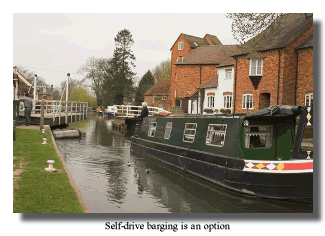
The differences between a river cruise experience on the one hand and a self-drive barge on the other are matters of personal taste and preference. The larger river cruise vessels and the luxury barges are akin to the best cruising experiences anywhere. Smaller crewed or self-drive barging is an outing, something more like a bareboat charter or renting a recreational vehicle on land – an adventurer’s way of crossing the terrain. In either instance, however, it is the close connectedness of the traveler to the landscape that’s key to the experience. The often ancient cities and villages that have grown up on the banks of the old rivers are artifacts in their own right. River travel affords the opportunity to savor history and culture as it was meant to be experienced: not as an observer, but as a participant.
The peak season for river cruising is much the same as European travel in general, late spring through mid-fall and early November. The shoulder season, a real value, ranges from early March through mid-May. The autumn months coincide with grape season, and several cruise lines are fully booked during this time by wine connoisseurs. Finally, April is tulip season and cruises in and around the Netherlands are particularly popular then.
As always, pack as lightly as possible, as space on the smaller barges can be at a premium. Your cruise operator will no doubt provide you with a list of recommended items to bring, but the usual recommendations of hats, sunscreen and sunglasses are often overlooked but very important, because so much of your time will be spent outdoors. The smaller barges and self-drive options require good deck shoes and weather gear.
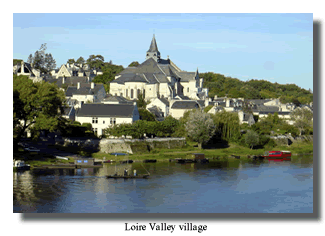
Regarding travel budgets… amenities offered by the cruise and barge operators and the travel season determine costs. For high-end river cruises and hotel barges, $2,100 per person, double occupancy and cruise only, is a common brochure cost for a seven day cruise. 12 day cruises often range from $2,800 upwards, but discounts are usually available for most itineraries through your travel agent. Other cruises may be had for as little as $800.00 for a seven day itinerary. Costs typically include all meals, tour excursions, and accommodations. Tips and gratuities are expected, ranging from $10 – $35 dollars per day. Self-drive options cost approximately $700 – $1000 per week for the barge alone, with all provisioning, fuel and other charges as additional costs. Your travel consultant will have many resources on hand for finding the best possible values.


